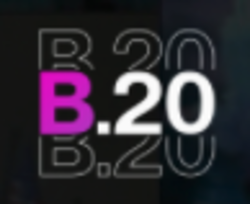- A recent tweet from crypto analyst Amelie has ignited discussion that XRP might be used in BRICS’s new cross-border payment system.
- The BRICS nations have been actively developing a decentralized payment system to facilitate cross-border transactions in their local currencies.
The BRICS economic bloc, comprising Brazil, Russia, India, China, and South Africa, has been accelerating efforts to establish a cross-border payment system independent of Western financial infrastructure. With de-dollarization a key goal, BRICS nations are seeking alternatives to SWIFT and traditional banking systems.
Russian Finance Minister Anton Siluanov recently confirmed that Moscow is working on financial instruments within BRICS, including a cross-border payment system. According to state-run news agency TASS, Siluanov emphasized that the new system could leverage national currencies, digital technologies, and digital financial assets. He further noted that building a robust financial infrastructure is crucial for enhancing trade and economic growth among BRICS nations.
Crypto influencer Amelie recently claimed on X that “BRICS COUNTRIES HAVE SUCCESSFULLY TESTED #XRP IN THE PAST! 
As highlighted in our previous article, 95% of trade between Russia and China is conducted in rubles and yuan, drastically cutting reliance on the U.S. dollar. Intensifying the financial strain, U.S. President Donald Trump threatened 100% tariffs on BRICS nations, driving them even closer to alternative financial systems.
Could XRP Solve BRICS’ Payment Challenges?
Ripple’s XRP is engineered to facilitate cost-effective cross-border transactions, settling payments within 3 to 5 seconds, which is faster than traditional systems like SWIFT, which can take 1 to 3 days. Transaction fees on the XRP Ledger are minimal, averaging 0.00001 XRP per transaction, equating to fractions of a cent. Unlike Central Bank Digital Currencies (CBDCs), XRP operates independently of any government or central authority, positioning it as a neutral bridge asset for international payments.
Ripple’s On-Demand Liquidity (ODL) solution further enhances its utility by eliminating the need for pre-funded accounts, enabling seamless currency exchanges across borders. However, several challenges may impede XRP’s adoption within BRICS.
Geopolitical considerations may push BRICS nations to favor payment systems under their control rather than relying on a private entity like Ripple, as seen in the development of Russia’s System for Transfer of Financial Messages (SPFS) and China’s Cross-Border Interbank Payment System (CIPS), which reduce dependence on SWIFT.
Additionally, regulatory barriers, such as India’s cautious stance on cryptocurrencies, could hinder XRP’s integration. With Russia and China already operating alternative systems, the urgency to adopt XRP diminishes further. Instead of fully embracing XRP, BRICS may opt for a hybrid payment system that combines CBDCs for domestic transactions, gold-backed digital assets for stability, and potentially XRP for instant cross-border settlements.
This approach would allow BRICS to maintain financial sovereignty while leveraging blockchain technology’s efficiency. The upcoming 17th BRICS Summit, scheduled for July 6-7, 2025, in Rio de Janeiro, Brazil, is expected to address these topics. With Brazil holding the BRICS presidency in 2025, the summit will focus on cooperation among Global South countries and reforms in global governance.
Discussions about the payment system are anticipated to be included in the summit’s agenda, potentially driving greater cryptocurrency adoption and extending beyond current members to include nations like Egypt, Ethiopia, Iran, and the United Arab Emirates, which joined the bloc in 2024.
Recommended for you:
Credit: Source link












































































































































